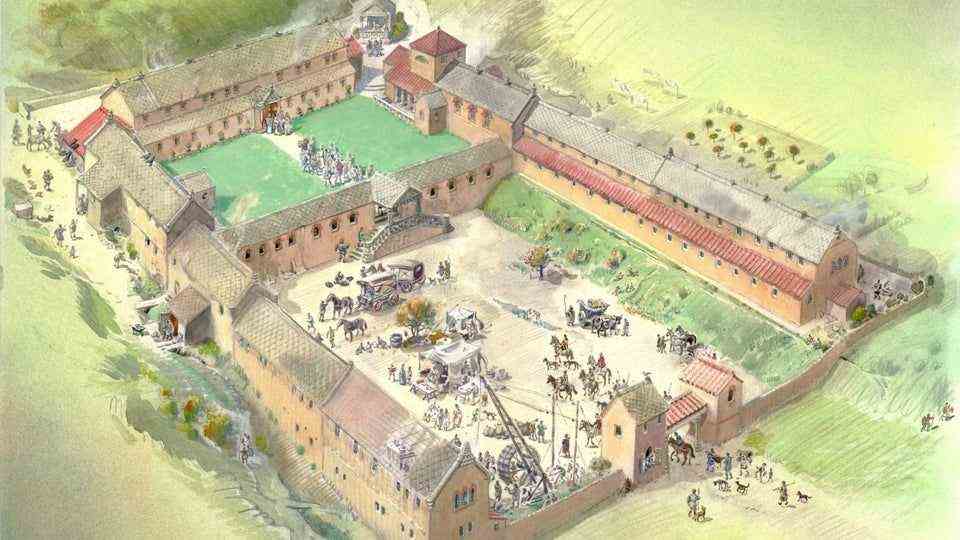Find in the UK
Roman culture even without an empire – how the decline of the empire was delayed
The mosaic is damaged in the center, but is better preserved on the edges.
© Stephen Haywood / National Trust / PR
The legions left Britain around 400 AD. However, in some areas the Roman way of life persisted before the Dark Ages began. In Chedworth, splendid new buildings could still be bought in the middle of the fifth century.
In many parts of Europe, the withdrawal of the Roman legions towards the end of the empire went hand in hand with rapid decline. This can be seen from the shards in the ground. At the time of the Romans something broke, so there are broken remains. Then the conquerors come and you find a high density of pottery – the proverbial elephant raged in the china shop. Then the broken fragments suddenly end because these goods are no longer being manufactured.
But besides the regions in which the empire ended so abruptly, there are areas in which Roman culture persisted even after the end of the rule of Rome – only to slowly come to an end. A fifth century mosaic has now been found in Gloucestershire, England, which adorned a Roman villa there. The special thing about it: Around 400 the Romans had actually given up the British Isles.

In Roman times, a villa is a complex agricultural factory with additional workshops and not just a large house in the country,
Britain as an outpost
After the Rhine border fell in 406 and Gaul was lost, the island was cut off. Roman Britain was in decline. The change came abruptly, around 350 there were still signs of great prosperity, only 50 years later the Roman troops fled the island, 400 years after the conquest by Vespasian. After 407 there are hardly any Roman coins left. It almost seems as if the Romans took everything precious with them. Historians believed that the early British abandoned Roman villas and population centers after the collapse of the imperial administrative system. This began a time that came to be known as the Dark Ages.
“It was believed that most of the population turned to subsistence farming to support themselves,” says Martin Papworth, an archaeologist with the UK National Trust. “The exciting thing about dating this Chedworth mosaic is that it is evidence of gradual decline. The creation of a new room and flooring indicate prosperity and a mosaic industry that continued 50 years later than thought. “
Decline in craftsmanship
The mosaic was discovered in 2017 but has only now been definitively dated. A decline in quality can be seen when compared to the fourth century mosaics found in the same villa and elsewhere in Britain. The skills of the craftsmen decreased significantly. The end of Roman rule also meant the end of the money economy in England. Work and services were no longer paid for in one currency. This also ended the empire’s economy, which was largely based on the division of labor.
But despite some flaws, the mosaic is a complex work of art. An outer border made of circles is filled with flowers and knots.
Papworth said the find shows a relatively slower decline in the lifestyles of the rich elite rich in south west England. Compared, for example, with the north and east, where the rich country estates were quickly plundered and destroyed during raids, a summer dining room was still built here in the middle of the fifth century.
Estate in prime area
The villa was built shortly after the Roman conquest in 120 and then continuously expanded over 300 years. It is a very fertile region. The remains of 50 Roman country estates can be found in the vicinity. It can be assumed that the conquerors secured the fertile area and introduced the Roman form of agriculture there.
For most people, living in a villa does not mean a meal in the mosaic-adorned rooms, but slavery. The villa system was based on it.
After 300 years, the owners did not want to give up the villa and the associated estate. Especially since there were fewer and fewer “safe” zones in the empire. Escape would only have made sense if the same family had also owned large estates in the shrinking territory.


